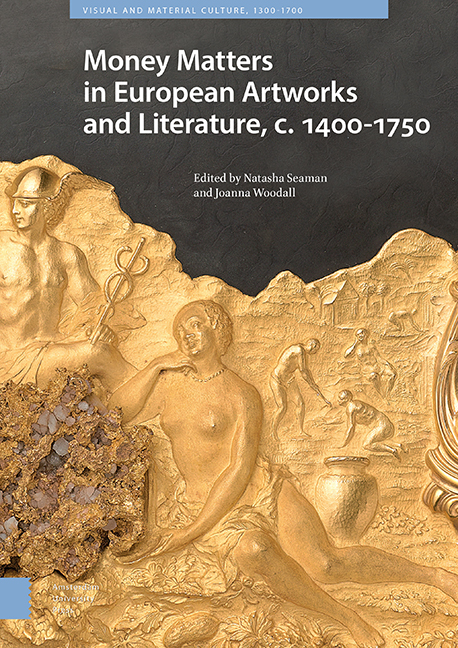4 - Beyond the Mint: Picturing Gold on the Rijksmuseum’s Box of the Dutch West India Company
Published online by Cambridge University Press: 15 September 2022
Summary
Abstract
In 1749 the Dutch West India Company (GWC) presented an extraordinary document box – finely crafted in gold and tortoiseshell and lined with velvet – to Stadholder Willem IV (1711-1751). Pictured on the lid, shaped in gold, are the three prized commodities exported from Africa at the time of the box's making: gold, ivory, and enslaved people. But while the value and material properties of gold are celebrated in this lavish gift, its dazzling richness obscures the anxieties that accompanied the circulation of un-minted gold in the seventeenth and eighteenth centuries. As I argue, the box responds to these anxieties by mimicking the stamped impressions and double-sidedness common to European coinage, “numismatic strategies” that simultaneously sanction its value and exploit gold's material properties.
Keywords: Dutch West India Company, Gulf of Guinea, gold, coins, trade, mint
In 1749 the Dutch West India Company (GWC) presented an extraordinary box – finely crafted in gold and tortoiseshell and lined with velvet – to Stadholder Willem IV (1711-1751) (figs. 4.1-4.5). Inside this finely wrought box was a document asking Willem IV to assume command of the GWC, a formality that was no doubt intended to garner support for the struggling trading company. On the lid of the box sits a large nugget of unrefined gold ore, around which are arranged three figures: an African man holding an elephant tusk; an African woman panning for gold; and Mercury, the god of trade, who supports a cartouche containing the insignia of the Company (fig. 4.2). Together, these figures picture the three prized commodities exported from Africa at the time of the box's making: gold, ivory, and enslaved people. But while each of these exports motivated the Company's continued presence on what Europeans referred to as the Gulf of Guinea in the seventeenth and eighteenth centuries, it was gold that established the standard value around which the other commodities were priced. This perhaps explains the precious metal's prominence in the design of the box where it is unabashedly the dominant material agent as well as the narrative focus. The nugget is joined by hammered reliefs that picture gold's extraction from the earth (on the right), and its subsequent circulation as a commodity (on the left). Pictured on the sides of the box are the Dutch forts through which countless commodities circulated (figs. 4.3-4.4).
- Type
- Chapter
- Information
- Money Matters in European Artworks and Literature, c. 1400-1750 , pp. 131 - 152Publisher: Amsterdam University PressPrint publication year: 2022



